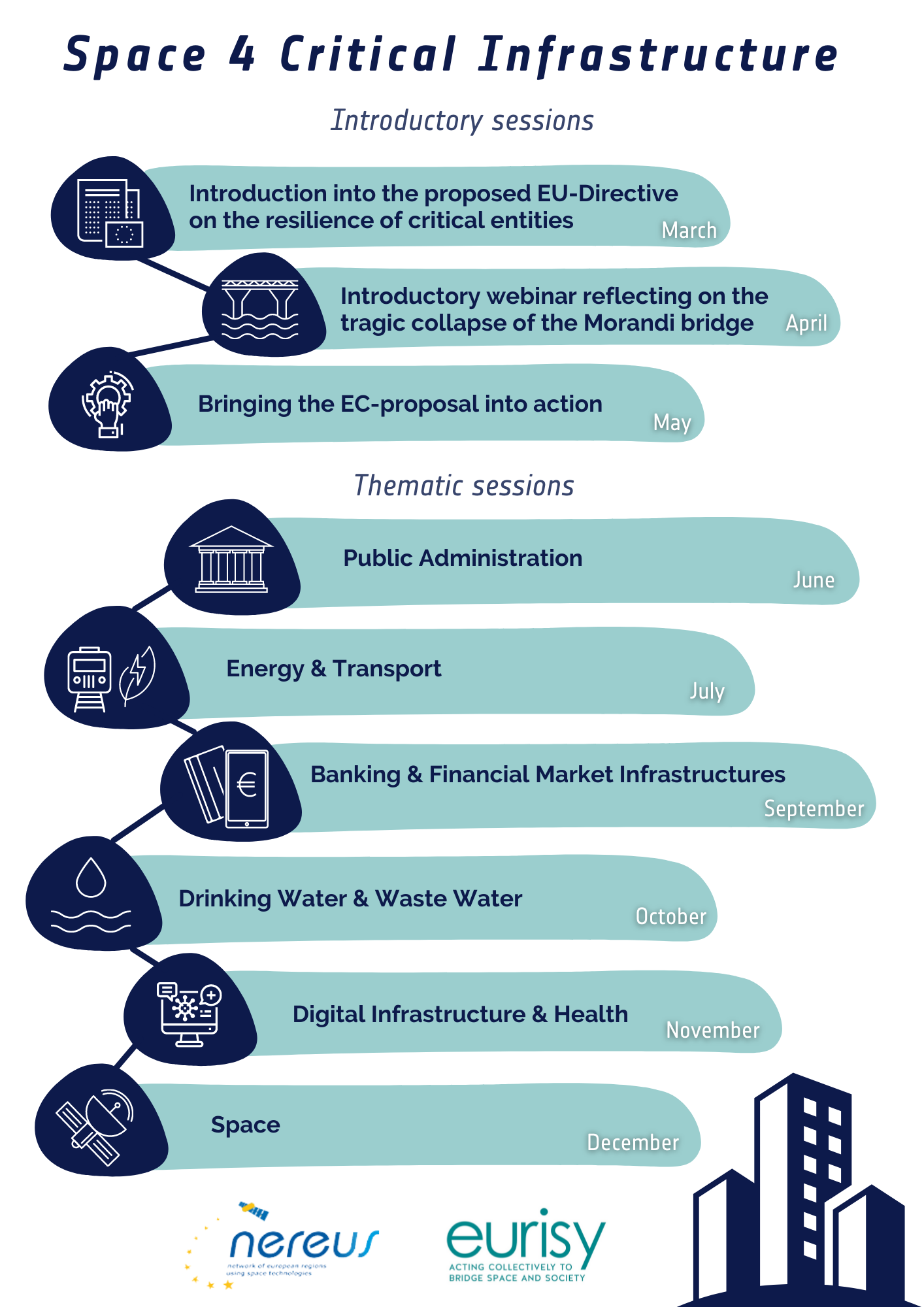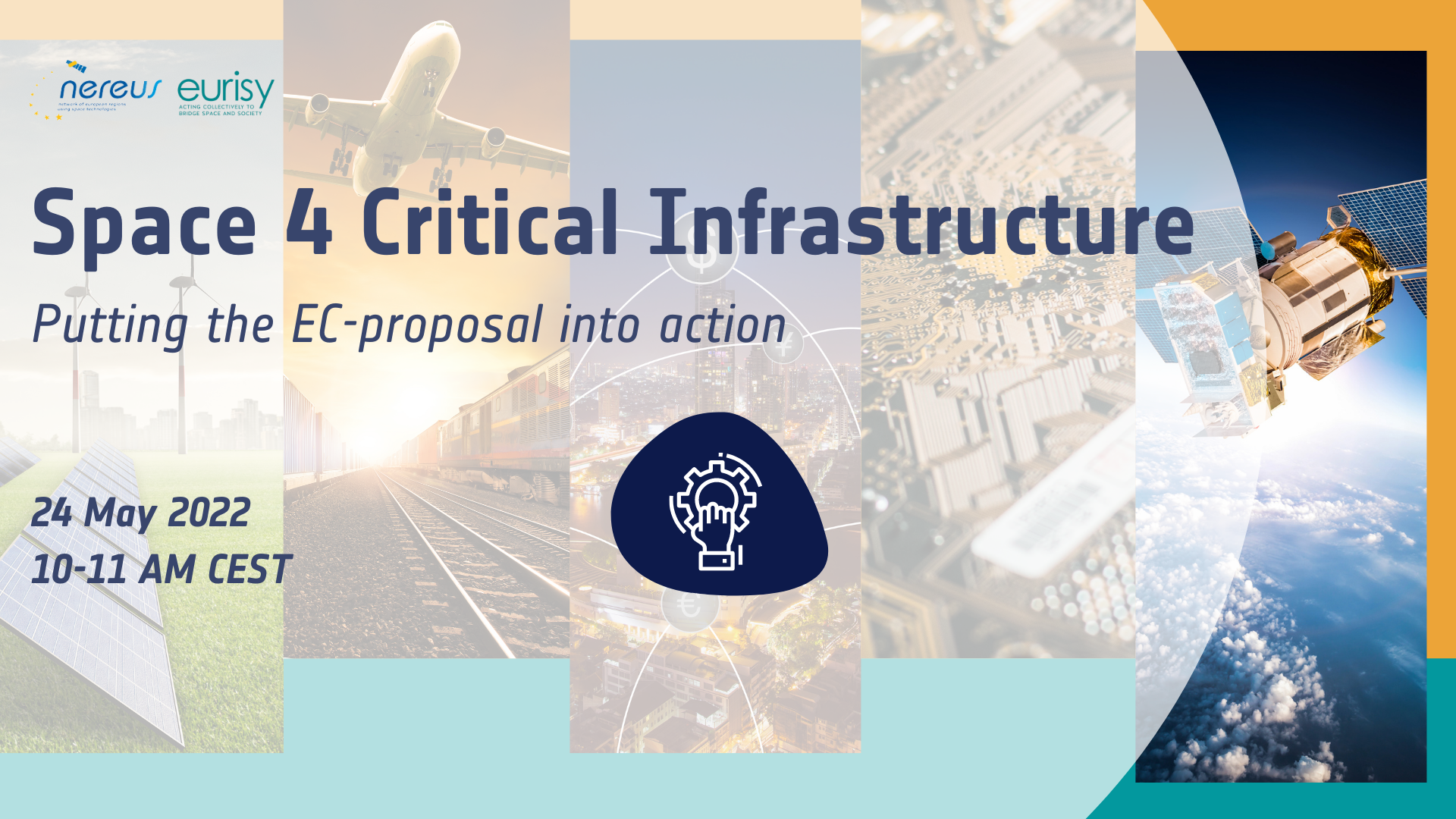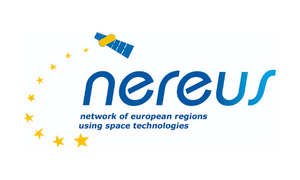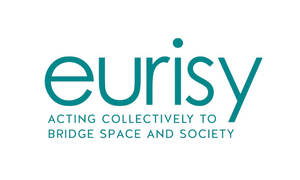About the webinar series
Space 4 Critical Infrastructure aims at presenting how satellite-based solutions can contribute to the monitoring and maintenance of critical entities. After three introductory webinars presenting the state of play of the legislative process and the rationale behind the enlargement of the scope of the proposed EU Directive on the resilience of critical entities, a set of thematic webinars will be organised to illustrate operational solutions.
In the last decade we have witnessed increasingly sophisticated physical and cyber risks threatening key services and infrastructure. EU-level measures and schemes to protect EU assets have been considered partly outdated and not sufficient. For this reason, the European Commission presented on 16 December 2020 a proposal for a new EU-Directive to enhance the resilience of critical entities providing essential services in the EU. Critical infrastructures are essential infrastructures for the functioning of our societies and economy. In the context of resilience and recovery from the Covid-19 pandemic the well-functioning of critical infrastructure is even more vital.
The series of webinars “Space 4 Critical Infrastructure” is meant to sensitise and discuss with regional stakeholders, research and business community the dimension of space uses to better monitor and safeguard critical entities in different domains. After three introductory web-sessions to set the stage on the rationale, the novelties and the approval process of the directive, the webinars will explore operational satellite-based applications per each sector identified in the proposed EU-directive (COM(2020) 829 final/2020/0365/COD), namely energy, transport, banking, financial market infrastructures, health, drinking water, waste water, digital infrastructure, public administration and space and will further elaborate on the benefits these solutions can bring to users to ensure more resilient environment to the citizens.

Objectives
- Introduction and overview on EU-legislative procedure related to the resilience of critical entities (COM(2020) 829 final/2020/0365/COD)
- Sensitising for the added value of space-based data and applications to address challenges related to better monitoring and safeguarding critical entities/critical infrastructure by presenting concrete and tangible use-cases in different domains
- Get an overview on upcoming funding opportunities to mobilise model projects to critical entities
- Food-for-thought to mobilise a model project in the domain
- Get an overview on key documents and references
Who is it for?
Regional/local stakeholders with an interest in Critical Infrastructures, public sector representatives, research community, SME, start-ups, industry.
Why European regions?
By hosting critical infrastructures and being partly responsible and due to their closeness to the citizen – regions are directly concerned. Monitoring and safeguarding critical infrastructures is a pan-European challenge due to its cross-sectoral and cross-border interdependencies and scope.
Organisers
About NEREUS
NEREUS (Network of European Regions Using Space Technologies) represents the interests of European regions that use space technologies while simultaneously highlighting the regional dimension of European space policy and programs. It is the only network where regional space user are the protagonists and share its governance. Exploring and promoting the benefits of space uses at regional level, NEREUS works on three main axes: Political Dialogue/Advocacy, Interregional co-operations and partnerships, New Trends and Outreach
About Eurisy
Eurisy is a non-for-profit association working on behalf of more than 15 European space agencies and innovation clusters to raise awareness on the potential of satellites-based solutions to foster economic and social well-being. Eurisy facilitates the exchange of knowledge and experience among public authorities at any level, private companies and any other entity using satellite services in a range of different sectors, among which environmental protection, maritime, health, tourism, transport and mobility, infrastructure management, and urban planning, to name few.



